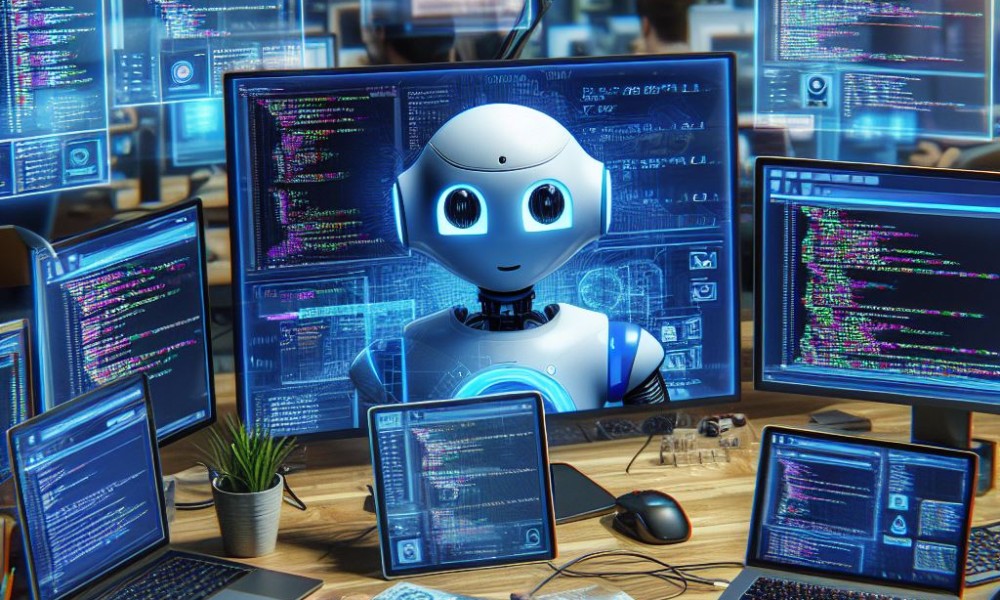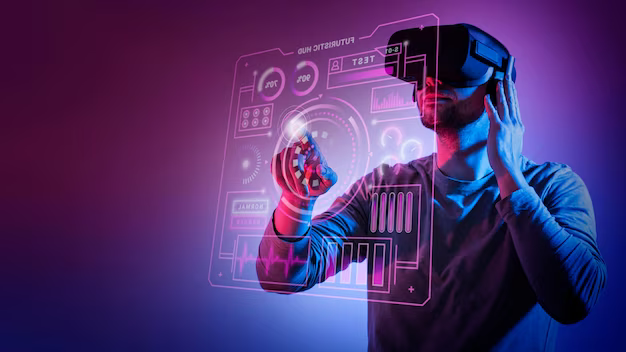A Deep Dive into Chatbot Development Tools
Chatbots have become incredibly valuable, in providing customer service and enhancing user experiences. These advanced virtual assistants are transforming how businesses engage with their customers simplifying workflows and offering assistance. To create a chatbot it’s crucial to have a planned strategy and meticulous design that aligns with a comprehensive understanding of user behavior. By mapping out user journeys and catering to the requirements of chatbot types companies can elevate overall customer experience and foster deeper engagement.
Chatbot Frameworks
There are chatbot frameworks that allow developers to create chatbots capable of understanding natural language and generating responses. These frameworks come with built models that can be trained on custom data enabling the creation of chatbots that can engage in meaningful conversations. Here are some of the chatbot frameworks to consider in 2024.
Rase open-source framework: Rase is a free and open-source framework that allows building chatbots, equipped with machine learning characteristics. It provides a visual dialog builder for designing chatbot interactions and uses natural language understanding (NLU) to enable chatbots to interpret human input. Furthermore, Rasa provides ready-made interfaces with various messaging services like Telegram, Slack, and Facebook Messenger.
DialogueFlow CX: CX DialogueFlow is a chatbot development framework that has predefined themes and incorporates various messaging services such as Google Assistant, Slack, and Facebook Messenger. It provides a visual dialog editor to design chatbot interactions and utilizes Google’s Dialogflow so that the bots can understand user inputs.
Press Bot: A chatbot creation open-source platform with machine learning capabilities. It includes pre-built interfaces with several messaging services like Facebook Messenger, Slack, and Telegram along with drag&drop chatbot development interface.
Microsoft Bot Framework: is one of the best frameworks for creating chatbots. It provides ready-to-use templates and integrates with several messaging platforms like Microsoft Teams, Slack, and Facebook Messenger. It becomes very powerful when used with other additional Microsoft tools, including Bot Builder, Azure bot service, and various cognitive services.
IBM Watson Assistant: is a powerful platform, capable of creating business chatbots with machine learning functionality. The company constructs conversational and live chatting bots that work through multiple networks, apps, and platforms. Some messaging services such as Microsoft Teams, Slack, and Facebook Messenger offer pre-built connections to the IBM Watson Assistant.
The following elements should be taken into account while choosing a chatbot framework for your development needs:
Ease of use: Choose an intuitive user interface for the chatbot creation framework.
Language support: Choose a chatbot framework that works with the languages your chatbot will have to interact with people.
Integration: Your chosen platform of chatbot and the framework should merge easily.
Cost: The cost of the chatbot framework should also be considered, including any additional fees for premium features or usage.
Chatbot development platform
Bot development platforms are software applications that enable developers to build chatbots without having to code from zero. These platforms provide a variety of features such as drag-and-drop interfaces, prebuilt templates, and natural language processing capabilities which simplifies the chatbot development process.
Some of the most popular bot development platforms are Chatfuel, ManyChat, Tidio, and Botsify. These platforms use different pricing plans from free to paid with differences in functionality. Some of the platforms also provide integrations with popular messaging apps such as Facebook Messenger, WhatsApp, and Slack enabling one to engage clients via a variety of channels.
When making selections of a bot development platform, you should pay attention to some partners such as partner pricing; features offered by the given platform like integrations with messaging apps, and other potential customers’ intent or even customer journey. With the correct selection of a bot development platform, businesses will be able to create effective chatbots that improve customers’ interactions and support.
Conversational AI tools
Conversational AI tools are a group of technologies that allow computers to comprehend, process, and synthesize human language. These tools leverage NLP, machine learning, and other AI techniques to mimic human-like dialogues. Various applications of Conversational AI tools include that used in chatbots, virtual assistants and customer service related Notable conversational AI tools include Yellow Ai, Dialogflow CX, and Contact Center AI Platform.
These tools are fed on huge datasets of text and speech to train the system in understanding human language. They learn from interactions constantly and enhance the quality of these interrelations rapidly. Conversational AI tools deliver various functionalities such as context-sensitive conversations, dialogues, sentiment analysis, and personalized interactions. It can be available in various mediums such as audio, video, and text. As a consequence, conversational AI tools change the way businesses interact with their customers by improving personalization and efficiency.
Chatbot programming
Chatbot programming involves the design of software programs that emulate intelligent human conversations using rules or artificial intelligence. chatbots may be developed so that they interact with the users through conversational interfaces using both written and spoken text.
To create chatbot programming, different kinds of languages e.Read More The proper chatbot programming practices include the identification of the target customers, the establishment of ideas about the voice that should be covered by a chatbot, and more. Chatbot programming is used in fields like customer care, e-commerce, and virtual assistants
By identifying best practices and utilizing the right programming language, organizations can create useful chatbots that enhance interactions between customers and support them.
Natural language processing for bots
Natural language processing, or NLP, is an integral part of chatbot programming that helps them understand and respond to the input from users. With NLP, computers are bestowed with the ability to analytically and readily analyze comprehend, and interpret natural language. NLP is not limited to the basic programming of chatbots and allows them to recognize entities, interpret a conversation’s environment, and respond with more individuality. These are the steps to building an NLP chatbot.
Business Logic Analysis: This step is fundamental for the development team to understand what a client needs. For creating the core qualities of an upcoming chatbot, a team should engage in conducting a discovery phase, taking into consideration researching competitive market conditions and developing business logic for the products.
Channel and Technology Stack Selection: The development team should select the chatbot’s channel and technology stack. The channel can be a website, mobile app, or messaging app, but the technology stack can range from Python to Clojure.
Natural Language Understanding (NLU): A technology that allows computers to understand, interpret, and generate the meaning of natural language correctly. NLU or beyond script writing for chatbots helps understand the context of a conversation and entities within it as well; with user-specific responses. NLU chatbots are taught in a wide variety of computer languages such as Python, Java Ruby, and C++ besides PHP to mention but a few. Such programming languages offer NLU and machine learning functions as libraries or frameworks for the development of chatbots.
NLU chatbots are applied in customer services, e-commerce, and virtual assistants among others. NLU is also significant since it allows the development of organizations, products, or even tools that can interpret and respond to natural human languages in simple terms for user’s cognition.
Intent Classification: One of the most important parts of chatbot development is intent categorization, which involves identifying what a user wants to find out or ask from the platform. It is the method of determining a user’s message goal and classifying it based on pre-defined labels.
Intent classification is most often implemented using a multi-class classifier neural network, giving the probability that the user asks about certain intent. The intent classifiers match the output of an NLU algorithm to relevant pre-defined labels in a training dataset.
With the help of intent categorization, chatbots can better understand messages posted by users and respond more accurately than using keywords. It is an important element of the structure of a chatbot that determines whether or not a chatbot will be effective in providing users with personalized and efficient responses.
Recognizing Entities: The identification of entities is among the fundamental parts of programming chatbots as it aids bots in understanding and processing inputs. This process involves identifying specific data entities that are present in a user input such as naming dates or product numbers and categorizing them according to pre-defined classes. However, a core component of NLU for chatbots is Named Entity Recognition (NER), which can be carried out via Duckling and spaCy.
Response generation: Chatbots generate responses based on user inputs by building human-like, appropriate to the context, and purposeful replies. Various models such as rule-based, retrieval-based, and generative-based help in this process. However, the ability to produce conversational responses is essential in chatbots, virtual assistants, and customer support systems permitting a more human-like discourse.
It uses machine learning algorithms and techniques, including sequence-to-sequence models and transformers to create personalized user experiences. The integration of large language models (LLMs) with sophisticated algorithms improves the quality and depth of chatbot responses, thereby making conversations more natural and engaging.
In conclusion
Chatbots are now relied on by businesses because they have become an integral part of customer engagement and efficient customer care. One of the necessary elements in forming interesting and practical chatbots is to create conversational AI tools, including bot development platforms as well as frameworks for creating a chatbot, and natural language processing bots.
A crucial part of building chatbots is the response generation process that involves creating answers to user requests that are relevant, contextual, and human-like. More conversational and natural interactions are achieved through advanced algorithms that use NLP skills, which increase the dialogue quality of a chatbot. The future of AI-powered replies as well as chatbots is indeed very bright, with constant developments providing even more efficient and personalized user experiences.






